Showing Spotlights 9 - 16 of 48 in category All (newest first):
 OLED technology is based on the phenomenon that certain organic materials emit light when fed by an electric current. OLED technologies makes it possible to manufacture ultra flat, very bright and power-saving OLED televisions, windows that could be used as light source at night, and large-scale organic solar cells. Since the development of the first viable OLED device in 1987, and tens of thousands of patents and research articles later, OLED device technology is moving towards its fourth generation.
OLED technology is based on the phenomenon that certain organic materials emit light when fed by an electric current. OLED technologies makes it possible to manufacture ultra flat, very bright and power-saving OLED televisions, windows that could be used as light source at night, and large-scale organic solar cells. Since the development of the first viable OLED device in 1987, and tens of thousands of patents and research articles later, OLED device technology is moving towards its fourth generation.
Jan 27th, 2021
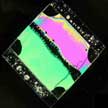 Many of the electronic devices we use in our everyday life employ liquid crystals in their optical displays. Electric field induced orientational transitions of elongated liquid crystal molecules are at the heart of LC technologies. Changing the applied voltage controls the orientation of liquid crystals and their properties such as color. Scientists now report an experimental observation of the electro-optical effect that is completely opposite to the conventional guest-host effect: ferroelectric nanoparticles being switched by an external field mediate the switching of liquid crystals.
Many of the electronic devices we use in our everyday life employ liquid crystals in their optical displays. Electric field induced orientational transitions of elongated liquid crystal molecules are at the heart of LC technologies. Changing the applied voltage controls the orientation of liquid crystals and their properties such as color. Scientists now report an experimental observation of the electro-optical effect that is completely opposite to the conventional guest-host effect: ferroelectric nanoparticles being switched by an external field mediate the switching of liquid crystals.
Aug 28th, 2020
 Perovskite QLEDs possess the features of wide gamut and real color expression; that's why they have been considered as very promising candidates for next-generation high-quality lighting and displays. However, device efficiency and stability of perovskite QLEDs has always been a major challenge. Researchers now report a new passivation technique that greatly enhances device performance and stability compared to single interface processing.
Perovskite QLEDs possess the features of wide gamut and real color expression; that's why they have been considered as very promising candidates for next-generation high-quality lighting and displays. However, device efficiency and stability of perovskite QLEDs has always been a major challenge. Researchers now report a new passivation technique that greatly enhances device performance and stability compared to single interface processing.
Aug 10th, 2020
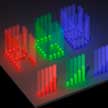 Researchers have fabricated nanoscale color pixels that utilize three-dimensional space to improve and control the brightness of individual pixels with nanoscale lateral dimensions. Specifically, this novel method utilizes 3D printing of vertically freestanding nanostructures containing red, green, or blue light-emitting quantum dots embedded in polymer nanowires. The emission brightness of the pixels linearly increases with the height of the pixels due to the increase in the number of quantum dots due to the increased volume. The 3D geometry enables a 2-fold increase in brightness without causing significant changes in the lateral dimensions of the pixel.
Researchers have fabricated nanoscale color pixels that utilize three-dimensional space to improve and control the brightness of individual pixels with nanoscale lateral dimensions. Specifically, this novel method utilizes 3D printing of vertically freestanding nanostructures containing red, green, or blue light-emitting quantum dots embedded in polymer nanowires. The emission brightness of the pixels linearly increases with the height of the pixels due to the increase in the number of quantum dots due to the increased volume. The 3D geometry enables a 2-fold increase in brightness without causing significant changes in the lateral dimensions of the pixel.
Aug 5th, 2020
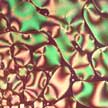 Both display and non-display applications of liquid crystals rely on advanced liquid crystal materials. Liquid crystal materials with new functionalities can be produced by dispersing nanomaterials in liquid crystals, resulting in a mixture of nano-dopants and liquid crystals. These novel, nanotechnology-based materials very often exhibit unusual properties. For that reason, nanomaterials in liquid crystals are a hot topic of contemporary liquid crystal research and many research teams around the world carry out basic research in this field.
Both display and non-display applications of liquid crystals rely on advanced liquid crystal materials. Liquid crystal materials with new functionalities can be produced by dispersing nanomaterials in liquid crystals, resulting in a mixture of nano-dopants and liquid crystals. These novel, nanotechnology-based materials very often exhibit unusual properties. For that reason, nanomaterials in liquid crystals are a hot topic of contemporary liquid crystal research and many research teams around the world carry out basic research in this field.
Mar 4th, 2020
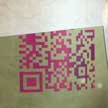 Researchers have developed numerous applications with structural colors, among them the creation of sophisticated security features for anti-counterfeiting. Covert polarization displays, for instance, provide a barrier to the inadvertent viewing of encrypted optical information without compromising packaging aesthetics. To break through the flexibility/scalability limitation of existing systems, researchers have now developed a large-area covert polarization display technology by using ultrathin lossy nanocolumns deposited on a metal film. This clever strategy for switching covert optical information uses polarization-dependent multicolors without structurally sophisticated fabrication processes.
Researchers have developed numerous applications with structural colors, among them the creation of sophisticated security features for anti-counterfeiting. Covert polarization displays, for instance, provide a barrier to the inadvertent viewing of encrypted optical information without compromising packaging aesthetics. To break through the flexibility/scalability limitation of existing systems, researchers have now developed a large-area covert polarization display technology by using ultrathin lossy nanocolumns deposited on a metal film. This clever strategy for switching covert optical information uses polarization-dependent multicolors without structurally sophisticated fabrication processes.
Jan 10th, 2020
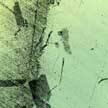 Researchers report an interesting phenomenon of two-dimensional (2D) hexagonal boron nitride (h-BN)-induced planar-alignment of a nematic liquid crystal and the subsequent optical and electro-optical effects. Liquid crystals (LCs) are optically anisotropic materials, and they are widely used in electro-optical display technology, known as liquid crystal displays (LCDs). Understanding the alignment phenomena of a nematic LC on a surface remains an important area of research, as the alignment process determines the LC's molecular orientation and conformation - which influence the LC's optical and electro-optical characteristics in LCDs.
Researchers report an interesting phenomenon of two-dimensional (2D) hexagonal boron nitride (h-BN)-induced planar-alignment of a nematic liquid crystal and the subsequent optical and electro-optical effects. Liquid crystals (LCs) are optically anisotropic materials, and they are widely used in electro-optical display technology, known as liquid crystal displays (LCDs). Understanding the alignment phenomena of a nematic LC on a surface remains an important area of research, as the alignment process determines the LC's molecular orientation and conformation - which influence the LC's optical and electro-optical characteristics in LCDs.
Jan 9th, 2019
 The reorientation of elongated liquid crystalline molecules under the action of the applied electric field is a major physical effect enabling the use of liquid crystals in a variety of applications. To improve liquid crystal devices, new liquid crystal-forming materials are required. Recently, by merging liquid crystals and nanotechnology, a new, non-synthetic way to produce advanced liquid crystal materials was proposed. In short, it was achieved by dispersing various types of nanomaterials in liquid crystals.
The reorientation of elongated liquid crystalline molecules under the action of the applied electric field is a major physical effect enabling the use of liquid crystals in a variety of applications. To improve liquid crystal devices, new liquid crystal-forming materials are required. Recently, by merging liquid crystals and nanotechnology, a new, non-synthetic way to produce advanced liquid crystal materials was proposed. In short, it was achieved by dispersing various types of nanomaterials in liquid crystals.
Sep 4th, 2018
 OLED technology is based on the phenomenon that certain organic materials emit light when fed by an electric current. OLED technologies makes it possible to manufacture ultra flat, very bright and power-saving OLED televisions, windows that could be used as light source at night, and large-scale organic solar cells. Since the development of the first viable OLED device in 1987, and tens of thousands of patents and research articles later, OLED device technology is moving towards its fourth generation.
OLED technology is based on the phenomenon that certain organic materials emit light when fed by an electric current. OLED technologies makes it possible to manufacture ultra flat, very bright and power-saving OLED televisions, windows that could be used as light source at night, and large-scale organic solar cells. Since the development of the first viable OLED device in 1987, and tens of thousands of patents and research articles later, OLED device technology is moving towards its fourth generation.
 Subscribe to our Nanotechnology Spotlight feed
Subscribe to our Nanotechnology Spotlight feed





